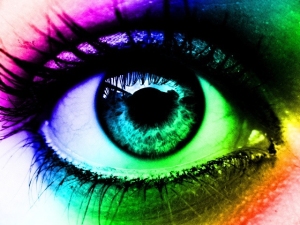1) How is eye color determined?
Eye color is determined by two distinct factors.
- The pigmentation of the eye’s iris – The iris is a muscle and the colored part of the eye. The amount of melanin present determines eye color.
- The scattering of light in the stroma of the iris – Rayleigh scattering is a similar phenomenon that accounts for the blueness of the sky. Blue and green pigments are not present in the iris of humans or ocular fluid.
2) Does eye color change with age?
- Yes. Most babies with European ancestry have light-colored eyes before the age of one. As a child grows, melanocytes produce melanin. Melanocytes are cells found within the iris of human eyes. Most eye color changes occur when the child is around one year old, however it can happen up to three years of age.
- Eye color (lightening or darkening) may change with age. This occurs in 10 to 15 percent of the population. However, if your eye color changes dramatically as an adult, it is important to schedule an examination with your eye doctor. Eye color changes may indicate certain diseases, such as Fuch’s heterochromic iridocyclitis, Horner’s syndrome or pigmentary glaucoma.
3) Is it possible to see emotions such as anger or love in the eyes?
Yes. Certain emotions can change both the pupil size and the iris color. Pupil size gets larger in dimmer lighting and smaller in brighter lighting. When pupil size changes, pigment in the iris compress or spread apart, which can change the eye color.
4) What makes eyes green?
The color of green eyes is not a result of iris pigmentation. Green eyes are due to a combination of amber or light brown pigmentation of the stroma. There is a low or moderate concentration of melanin. The green appearance is due to the Rayleigh scattering of reflected light.
5) What can I do to change my eye color?
Color contact lenses are available if you want to change your eye color. There are even colored contact lenses with patterns for occasions such as Halloween. Since contact lenses are medical devices, visit your doctor of optometry for a contact lens fitting.
~Melissa Barnett, OD, FAAO
California Optometric Association
http://www.coavision.org
